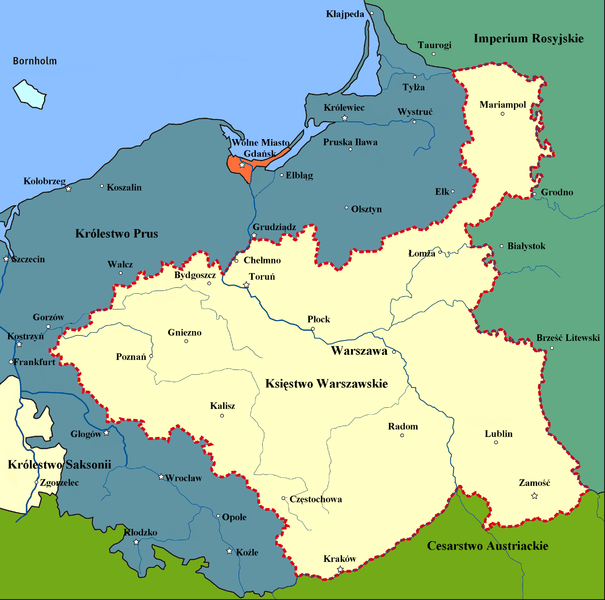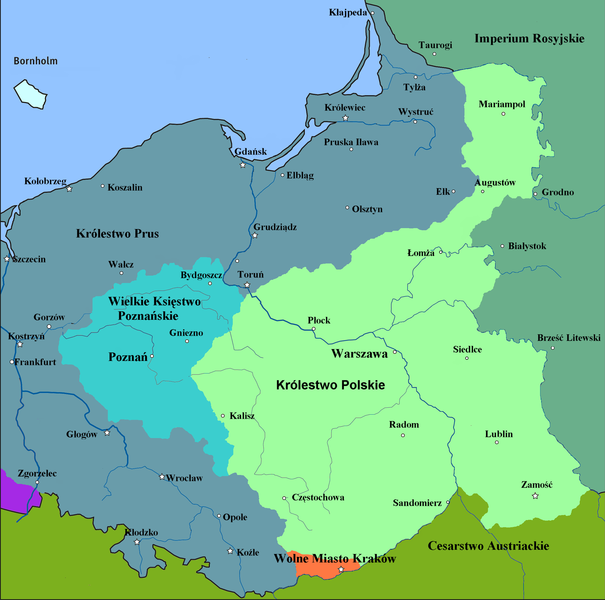SHORT HISTORICAL BACKGROUND OF POLAND
Greetings everyone.
I volunteered to make such an article about what circumstances may occur in the background of Polish sc. To understand all the matter, one must turn back in time over 200 years ago...
200 years prior to my birthday,
in 1791 as second country in the world (after USA) and first in Europe, Poland created a constitution (Konstytucja 3 Maja). This angered Russia, which lost control over Poland. War broke. Russia defeated Poland.
In 1794 an Uprising of Tadeusz Kościuszko broke out. After few military successes it fell after Russia allied with Prussia.
Year 1795.
The Third Partiation of Poland.
Catastrophical annihilation of country.
Earlier the strongest regional power in Northern and Central Europe now losses its independence.
Polish-Lithuanian Commonwealth, the First Rzeczpospolita (I Polish Republic)
was partiated between three "black eagles" Russia Prussia and Austria. Those three countries will form an alliance and took hegemony in Europe for few decades.
Russia took wast eastern lands, where lived Poles, Lithuanians, Ukrainians and Belarussians. It took also the area of Duchy of Courland, Polish fief, part of nowaday Latvia.
Prussia took north-western lands, the heart of nowaday Poland with Warsaw, Pommern and Greater Poland.
Austria took central-southern lands with Kraków.
During Wars with Napoleon, after Battles of Austerlitz 1805, Jena and Auerstedt 1806, France defeated Austria and Prussia. Poles allied with Napoleon.
The Duchy of Warsaw was created from the Prussian 2nd and 3rd partiation
In 1809 young Polish state was strong enough to defend itself from Austrian invasion and Austrian 3rd partiation was incorporated to the Duchy.
In 1812 War between France and Russia broke out. Napoleon took Moscow but was forced to retreat. Russian winter defeated earlier invincible Napoleon Army.
In 1813 Russia forced its rule over Duchy of Warsaw.
In 1815 on Wien Congress, the Duchy was divided into Kingdom of Poland (with Russian Tsar as Polish king), Grand Duchy of Poznań (incorporated to Prussia) and Free City of Kraków (dependent from Austria)
see below:
This new order survived over 100 years.
During that time the greatest Polish literature of romanticism era has been created.
Uprisings in 1830-31, 1846, 1848 and 1863-64 were unsuccessful.
Positivism replaced romanticizm.
In that era Poles didn't rise but concentrated on work from the basis to built their wealth, however still waiting for their chance to regain independence.
In the time at the turn of XIXth and XXth centuries, currently living Polish supercentenarians were born.
Either in Russia and were rusificated
Either in Germany and were germanized (even stronger)
Either in Gallicia in Austria-Hungary, which was the only land where Poles had wide authonomy. Austria-Hungary was already weakened state at the time. It was hard to keep all the nations in one state.
The three: Russia Prussia and Austria did not have any arguement. At least not before 1914.
When the First World War broke. Russia joined Ententa forces with France and England and the War between Germany, Austria and Russia became fact. In this war Poles were recruited into three different armies. They often were forced to fight against themselves, serving in two enemy armies. 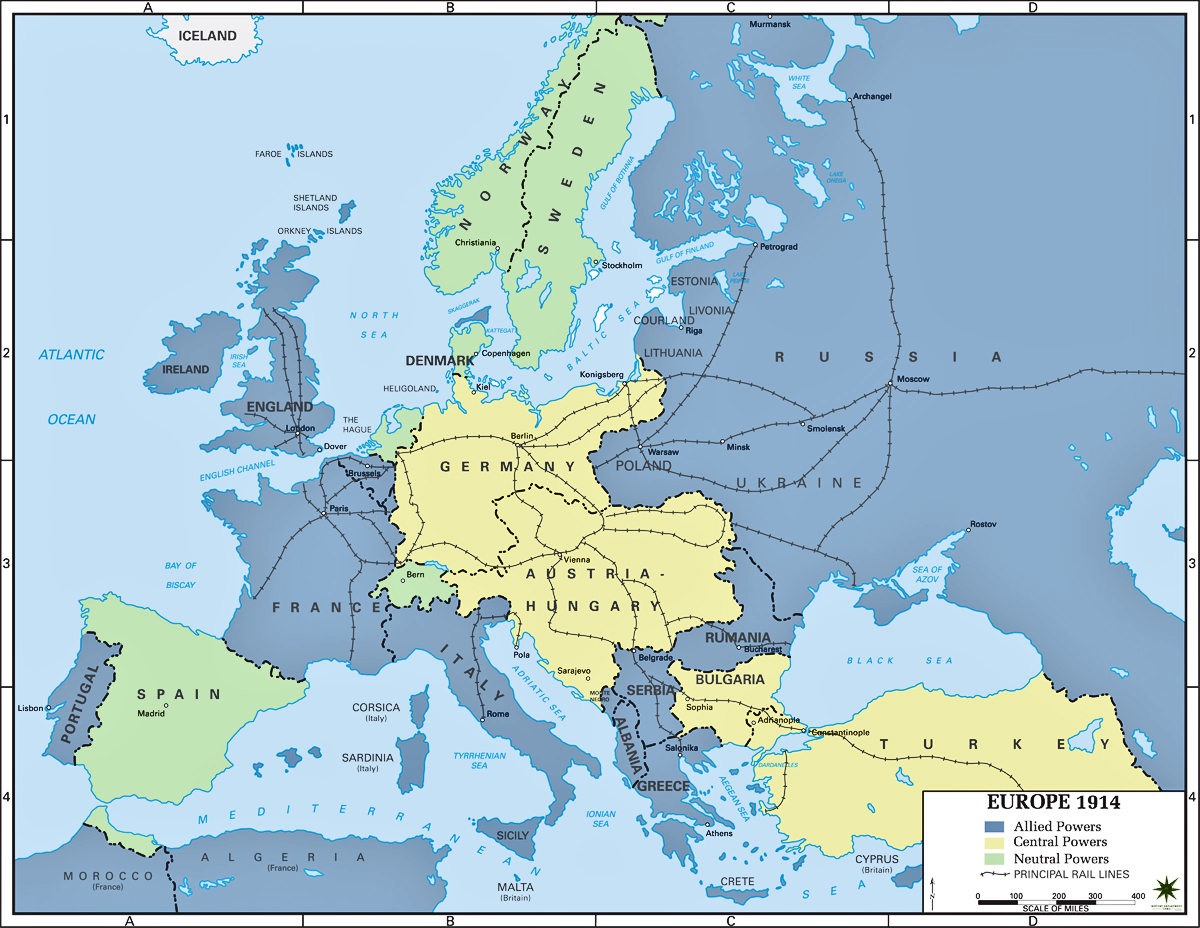
In 1917 Russia was defeated. German and Austrian troops took wast eastern land under occupation.
In 1918 however, after USA joined the war, The Central Stated started to loose the war.
Multi-lingual Ausrto-Hungarian monarchy collapsed and disintegrated into smaller states.
German Empire was the last one standing. But in November 1918, crisis infected German economy.
On 11th November 1918 Germany surrendered. War ended.
This day in celebrated in nowaday Poland as the Independence Day.
War of borders begun. For Poland the war did not ended in 1918.
In 1918 Greater Poland's Uprising defeated Germany and Greater Poland was united with Poland.
In 1919, 1920 and 1921 three Silesian Uprisings made half of the Silesia unite with Poland.
The same occured in 1922 with Vilnius, inhabited by Polish majority (probably 3 Polish sc are from Vilnius)
In 1920 Polish-Russian War broke out. At first Poland managed to occupy Kiev, the capital of Ukraine, but later Russian offence came to Warsaw. It was only thanks to the Battle of Warsaw "Vistula miracle" that the independence of the young state has been defended successfully and Russian had to flee.
The last living veteran of that conflict is Cpt. Józef Kowalski (born 1900)
The treaty of Riga set the borders of the Second Rzeczpospolita. Second Polish Republic
This state however, had strong ethnic minorities. Especially numrous were the Belarussian and Ukrainian minorities. 
The further to east the less Poles.
But in north-eastern voivodeship Wileńskie, Poles were at great majority.

Independence lasted only 21 years.
On 1st September 1939, III German Reich's agression on Poland became the first campain of World War Second.
On 17th September Poland received a knife into back - Soviet agression in alliance with Germany (Ribbentrop-Molotov Pact)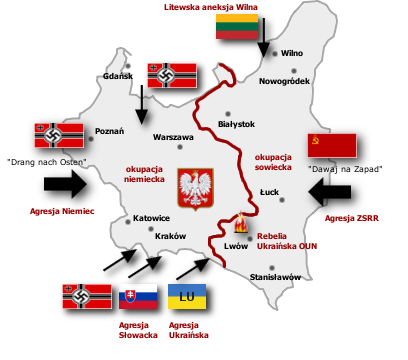
Slovakia also had its part in this invasion. It got few villages (2% of Poland's territory) in Carpathian mountains as a reward.
Wilno(Vilnius) was given to Lithuania. The city never came to Poland again.
Lithuania was happy from Wilno for a short time. In 1940, Soviet Union incorporated whole Lithuania along with Latvia and Estonia,
Some historians call this: "Fourth Partition of Poland" between Germany, Soviet Union, Slovakia and Lithuania.
During September German bombarded many Polish cities and towns.
The nazis forced their terror in Poland for 6 years.
In 1944 Warsaw has been destroyed by the German during and after Warsaw Uprising.
In the meantime ethnic clean-ups in the east forced Poles to flee from Ukraine to west. Mamy were killed, many documentation has been burned out. Churches has been demolished.
During the war many Poles were forced to go to Germany for work.
Poles from eastern voivodeships were just driven away to Siberia by the Soviets.
In 1945 the red army pushed the nazis out of Poland. Berlin was taken.
In the border change, Poland "moved to west" as the German eastern lands became part of Poland. The new voivodeships:
-- Opolskie v.
-- Dolnośląskie v.
-- Lubuskie v.
-- Zachodnopomorskie v.
A few Millions Germans have been driven from those lands to Germany
1 Million Poles repartiated there from Germany (workers)
Many people from the east settled there and colnisation started. E.g. Józef Kowalski born in Tarnopolskie voivodeship settled in Lubuskie v.
Or Bolesław Sipowicz from Wileńskie v. settled in Zachodniopomorskie v.
Many Polish centenarians from Lwów (before the war 3rd most popolous Polish city after Warsaw and Łódź) settled in Śląskie v.
But the looses were sadly bigger.
Poland lost all the East.
Voivodeships:
-- Wileńskie :(
-- Nowogrodzkie
-- Poleskie
-- Wołyńskie
-- Tarnopolskie
-- Stanisławowskie
Few Millions Poles were driven out from these lands to Poland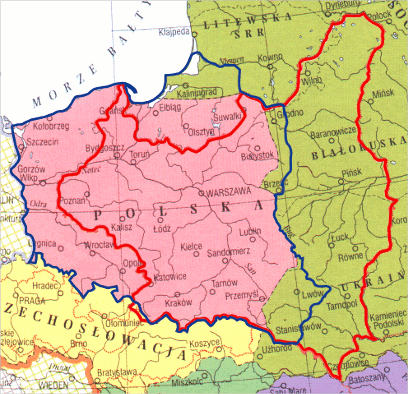
pink - nowaday Poland
red line - Second Rzeczpospolita
blue line - claimed borders - didn't become fact.
The new east border of Poland was the Curzon line
Western border was the Oder-Neisse line
The migration at those time of 1945-1949 was very massive.
That breeds the problem of supercentenarians being not born in their fatherland. And mistakes in accounting them to the land, where they were born.
Such a problem occures with Maria Jantke or Augusta Holtz, born in nowaday Poland. But they are German sc
And would also occure Józef Kowalski if he was verified. He was born on nowaday Ukraine. But he is Polish sc.
Communists took over in Poland. They reigned from 1945 to 1989.
The Round Table (Okrągły Stół) introduced Democracy to Poland once again. The revolution was peaceful. 

And so the THIRD RZECZPOSPOLITA was created. The third Polish Republic.
The state that currently exists.
The most famous ones who fought for Fall of communism in Poland were Lech Wałęsa (1943) and Pope John Paul II (1920-2005)
The border with Germany was not agreed by both sides still for all those years.
(!)
On 17th June 1991, on the very day I was born :) Poland and Germany signed a treaty, that set peace between two countries and approved of Oder-Neisse border.
Since that time there is finally peace in Central Europe.
In 1999 Poland became part of NATO
In 2004 Poland, along with 9 other states of Central Europe became part of European Union. Lithuania as well. The dreams of generations came true.
And for the grand finale the fluctuation of Polish borders over the years.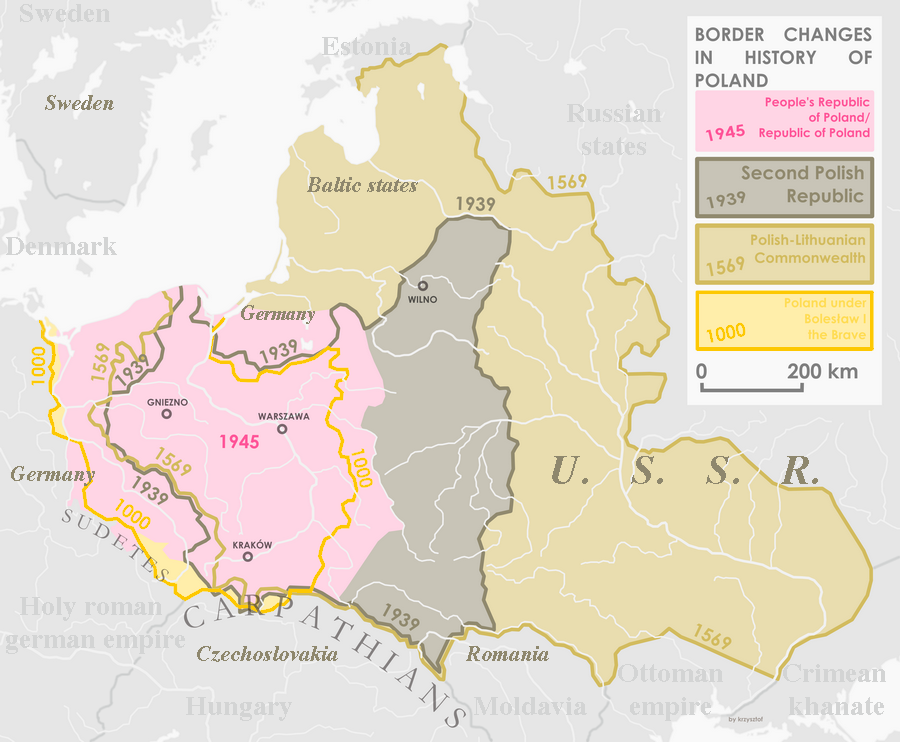
Thanks for reading and patience 
Wenzeslaus
